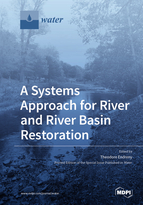A Systems Approach for River and River Basin Restoration
A special issue of Water (ISSN 2073-4441). This special issue belongs to the section "Water Quality and Contamination".
Deadline for manuscript submissions: closed (31 December 2018) | Viewed by 37750
Special Issue Editor
Special Issue Information
Dear Colleagues,
River and river basin restoration faces significant challenges: a) the restoration target is often unknown, and is not likely an initial or completely natural state, which remains poorly understood; b) restoration structures should provide multiple functions to benefit humans and biodiversity; c) restoration scale and complexity should consider local to basin-level issues; and d) restoration resiliency should handle uncertain future drivers and beneficiaries of river and river basin health. A strategy to restore dynamic and complex river and river basin ecosystems involves a systems approach. Based on a United Nations review of needs for river and river basin restoration, this Special Issue solicits contributions that advance knowledge in the following systems approach topics: 1) identifying, understanding, and working with the catchment and riverine physical, chemical and biological processes comprising river basin and river health and delivering ecosystem services; 2) identifying, incorporating, and involving socio-economic values and broader planning and development activities linked to river basin and river health; 3) addressing structure and function relationships at the appropriate scales to address limiting factors to river health; 4) setting clear, achievable, and measurable goals, framed (as much as possible) in terms of changes to ecosystem structure and function, the provisioning of ecosystem services and, where feasible, socioeconomic factors; 5) planning, implementing, and managing to provide resilience to a range of scenarios over time, including changes to climate, land use, hydrology, pollutant loads, and population, so restoration outcomes are sustained over the long term; 6) involving all relevant stakeholders in an integrated approach, addressing land and water issues, and involving interagency and community collaboration, to achieve the greatest benefits; and 7) monitoring, evaluating, adapting, and reporting evidence of river and river basin health, relative to goals, to guide restoration and adaptive management.
Prof. Theodore Endreny
Guest Editor
Manuscript Submission Information
Manuscripts should be submitted online at www.mdpi.com by registering and logging in to this website. Once you are registered, click here to go to the submission form. Manuscripts can be submitted until the deadline. All submissions that pass pre-check are peer-reviewed. Accepted papers will be published continuously in the journal (as soon as accepted) and will be listed together on the special issue website. Research articles, review articles as well as short communications are invited. For planned papers, a title and short abstract (about 100 words) can be sent to the Editorial Office for announcement on this website.
Submitted manuscripts should not have been published previously, nor be under consideration for publication elsewhere (except conference proceedings papers). All manuscripts are thoroughly refereed through a single-blind peer-review process. A guide for authors and other relevant information for submission of manuscripts is available on the Instructions for Authors page. Water is an international peer-reviewed open access semimonthly journal published by MDPI.
Please visit the Instructions for Authors page before submitting a manuscript. The Article Processing Charge (APC) for publication in this open access journal is 2600 CHF (Swiss Francs). Submitted papers should be well formatted and use good English. Authors may use MDPI's English editing service prior to publication or during author revisions.
Keywords
- integrated watershed management
- landscape design
- water and terrestrial ecosystems
- eco-hydrology
- structure function relationships
- surface water and groundwater interactions
- ecosystem services






